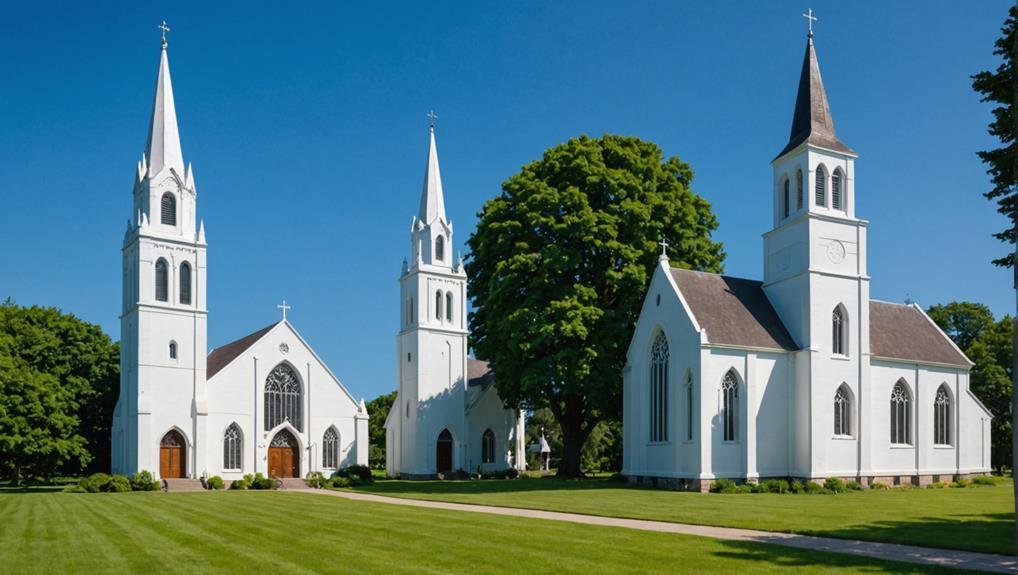When you explore the distinctions between Baptists and Methodists, you’ll notice intriguing differences in their baptism practices and church governance. Baptists insist on believers’ baptism by immersion, while Methodists include infant baptism, symbolizing God’s grace throughout life. The governance structures also contrast sharply; Baptists favor congregational autonomy, whereas Methodists operate under a more hierarchical framework. But how do these differences shape their worship, social engagement, and views on salvation? Understanding these nuances can offer deeper insights into how denominations interpret scripture and engage the world around them. What will you discover next?
Key Takeaways
- Baptists practice believers’ baptism by immersion, while Methodists accept infant baptism and practice open communion.
- Baptist church governance is congregational and independent; Methodists have a hierarchical structure with bishops.
- Baptists emphasize faith alone for salvation; Methodists view it as a process with God’s grace and works.
- Baptist worship is informal with contemporary music; Methodist worship is formal with traditional hymns and structured liturgy.
- Methodist leadership includes ordained women; Baptists generally limit women to non-ordained roles.
Baptism Practices Compared
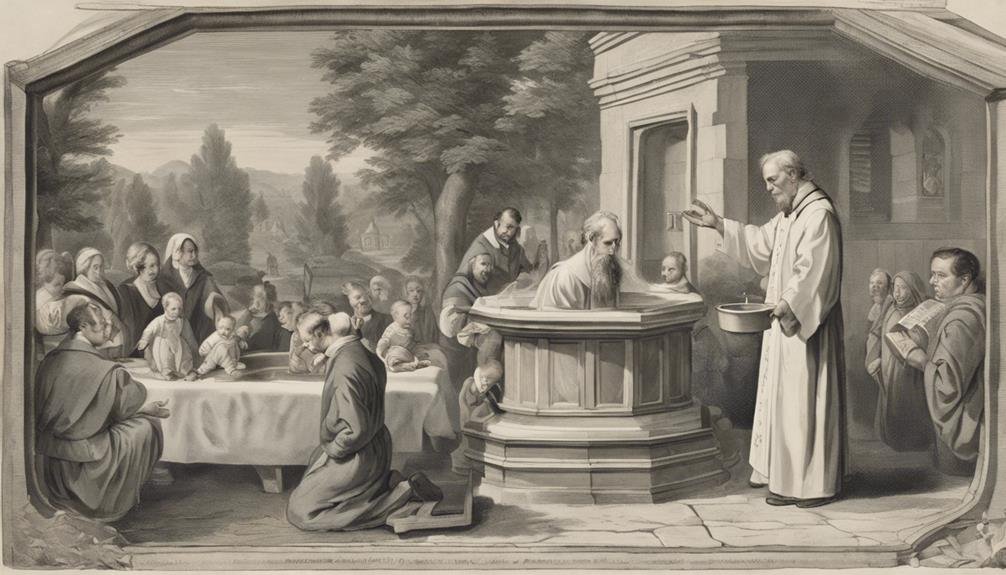
When comparing baptism practices between Baptists and Methodists, you’ll find distinct differences rooted in their theological beliefs. Baptists uphold believer’s baptism, where only those who profess faith in Christ are baptized. They reject infant baptism, emphasizing baptism as a conscious, personal decision. This act is performed through total immersion, symbolizing the death, burial, and resurrection of Jesus. For Baptists, it’s not about baptismal regeneration; rather, it’s a public declaration of one’s faith and a symbol of the inward transformation already experienced.
In contrast, Methodists embrace a more inclusive approach, accepting baptism for infants, youths, and adults. They perform the rite through sprinkling, pouring, or immersion, highlighting the baptism symbolism of cleansing and spiritual renewal. Methodists view baptism as a sacrament that signifies God’s grace and initiation into the Christian community. They believe baptism cleanses sins and is a means of grace, emphasizing baptismal regeneration.
These differing perspectives underscore the significance each tradition places on the purpose and meaning of baptism. While Baptists focus on an individual’s faith journey, Methodists emphasize the role of baptism as a communal sacrament of grace and initiation.
Communion Traditions
In exploring communion traditions, you’ll notice that Methodists and Baptists approach the Lord’s Supper with distinct theological perspectives and practices.
Communion significance is profound for Methodists, who practice open communion, welcoming all baptized Christians to partake. Their sacramental beliefs include the real presence of Christ in the Eucharist, though in an unknown way.
Conversely, Baptists view communion primarily as a symbolic remembrance of Christ’s sacrifice. They practice closed communion, limiting participation to baptized Baptist members within their congregations.
Here are some key differences:
- Participation: Methodists invite all baptized Christians, while Baptists restrict it to their members.
- Communion significance: For Methodists, it involves the mysterious real presence of Christ. Baptists emphasize it as a symbolic act of remembrance.
- Sacramental beliefs: Methodists see the Eucharist as a sacrament conveying grace, whereas Baptists view it more as an ordinance, a practice commanded by Jesus.
- Communion elements: Methodists might use wine and grape juice, while Baptists typically opt for grape juice only.
These distinct traditions highlight the diverse ways these denominations experience and interpret the sacred act of communion.
Church Governance Differences
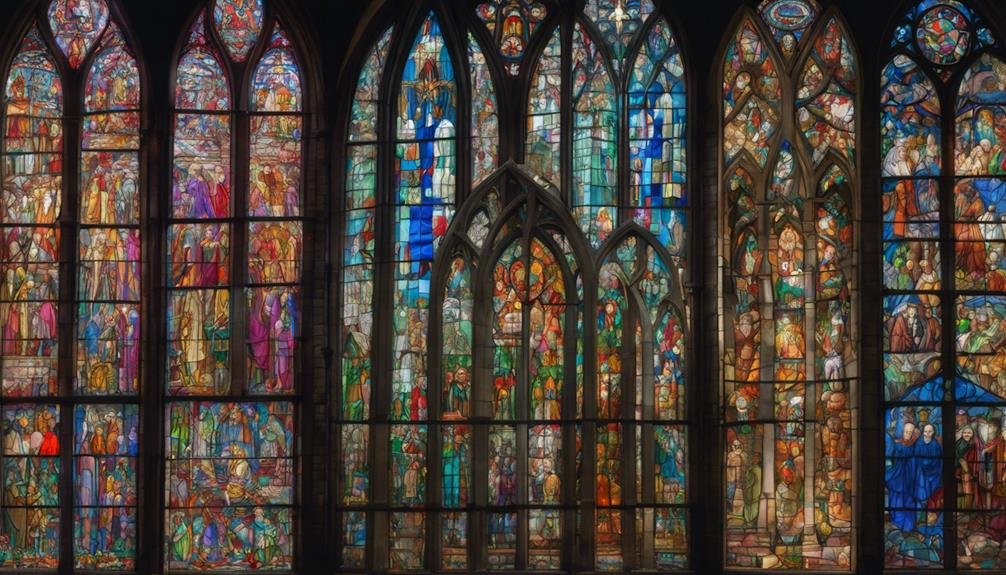
Understanding church governance differences between Methodists and Baptists sheds light on their distinct organizational structures. If you look at the Methodists, you’ll notice they have a hierarchical leadership structure. This means that leaders, like bishops, make decisions that affect all churches within their denomination. For instance, Methodist bishops can assign pastors to different churches. This centralized decision-making process is reinforced by bodies like the General Conference, Council of Bishops, and Judicial Council, which oversee various aspects of church governance.
On the other hand, Baptists operate with a different approach. They embrace a congregational governance model, where each church functions independently. There aren’t any overarching authorities like bishops or priests guiding them. Instead, Baptist congregations take charge of their decision-making processes. This includes selecting their pastors and managing their affairs without external interference. This local autonomy allows Baptist churches to tailor their leadership structure and operations to suit their community needs.
Salvation Doctrines
Baptists and Methodists are rooted in Christianity but hold distinct beliefs about salvation. As a Baptist, you’d emphasize salvation through faith alone or Sola Fide, focusing on a personal relationship with Jesus Christ. This approach highlights the individual’s responsibility to accept Jesus for personal salvation. Your faith journey, therefore, revolves around a decisive moment when you choose to follow Christ.
In contrast, Methodists view salvation as an ongoing process. For them, it’s a lifelong journey of sanctification involving grace and works. They believe God’s prevenient grace is crucial, inviting everyone to accept salvation. By rejecting predestination, Methodists emphasize the importance of free will in accepting God’s grace. This faith journey isn’t just a one-time event but a continuous commitment to live out one’s faith through good works and a deepening relationship with God.
Here’s a quick summary:
- Baptists: Salvation through faith alone, emphasis on personal decision.
- Methodists: Lifelong process of sanctification involving grace and works.
- Baptists: Focus on individual responsibility and personal relationships.
- Methodists: Emphasize God’s prevenient grace and free will.
Denominational History
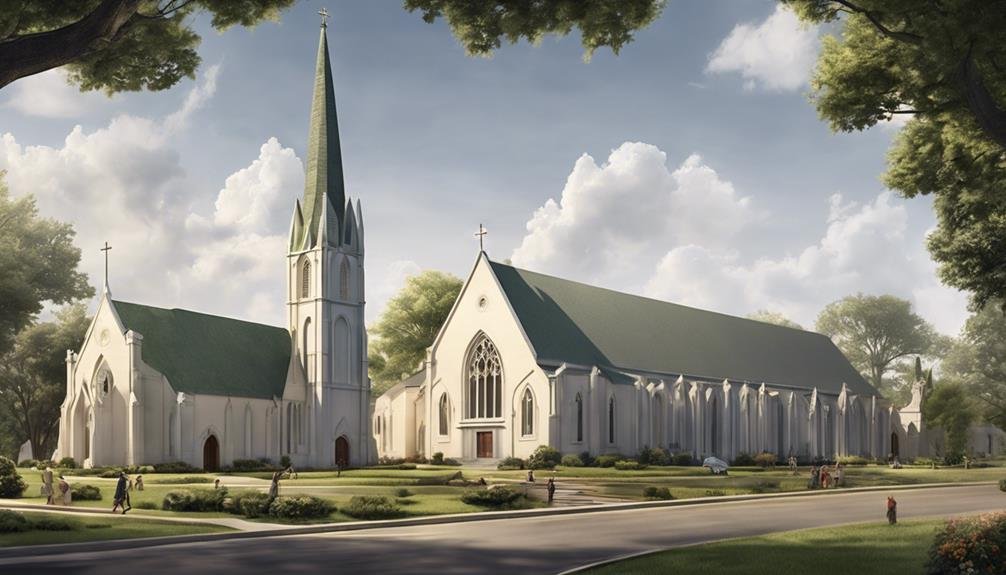
When exploring the denominational histories of Baptists and Methodists, you’ll notice their early Protestant roots set them on distinct paths. Baptists emerged in the 17th century from the Anabaptist movement during the Radical Reformation. At the same time, John Wesley founded Methodism in the late 18th century as a revival within the Anglican Church. These origins and key figures like Wesley have shaped their different theological emphases and practices over time.
Early Protestant Roots
In exploring the early Protestant roots of Baptists and Methodists, both denominations spring from the broader context of the Protestant Reformation. Baptists trace their lineage back to the Anabaptist roots, emphasizing the importance of believer’s baptism and congregational autonomy. This Anabaptist influence means that Baptists prioritize personal faith decisions and the independence of local churches, setting a foundation for their beliefs.
On the other hand, Methodists originated as a movement within the Anglican Church, heavily shaped by Anglican influence. John Wesley’s efforts within this context stressed personal holiness and social justice, eventually leading to the establishment of Methodist societies. This Anglican influence fostered a focus on faith, works, and community outreach, which became central to Methodist doctrine.
Here are some key points to remember about these denominations:
- Baptists: Emerged in the early 17th century with strong Anabaptist roots.
- Methodists: This began in the late 18th century as a movement within the Anglican Church.
- Focus: Baptists emphasize congregational autonomy, while Methodists highlight social justice.
- Global Presence: Baptists are the largest Protestant family in the U.S., and Methodists hold a significant international presence.
Founders and Key Figures
Delving into Baptists and Methodists’ founders and key figures reveals the distinct paths these denominations took in shaping their doctrines. Baptists, with their Anabaptist roots, emerged in Holland in the early 17th century, specifically around 1609. They emphasized adult baptism and the independence of local churches. This movement, which some also link to John the Baptist, laid a strong foundation for a fiercely committed denomination to individual belief and congregational autonomy.
On the other hand, Methodism came to life in the late 18th century through the pioneering efforts of John Wesley. Wesley’s impact was monumental as he diverged from the Anglican Church, seeking a more personal and practical expression of faith. He established Methodist clubs in 1739, which became the bedrock of the Methodist Church, emphasizing personal holiness and social justice. His theological insights and organizational skills propelled Methodism into a major Christian denomination.
While Baptists and Methodists share a common Christian faith, their founders’ visions and methodologies resulted in uniquely different approaches. Understanding these figures and their contributions helps you appreciate the rich tapestry of beliefs within Christianity today.
Worship Styles
Worship styles in Baptist and Methodist churches reveal their distinct approaches to faith and tradition. If you step into a Baptist church, you’ll likely experience an informal worship atmosphere where personal expressions of faith take center stage. The music selection often includes contemporary elements, aiming to engage everyone in the congregation. This style encourages active participation, making each service a unique and personal encounter with faith.
On the other hand, Methodist worship is characterized by a structured liturgical style. It has a more formal atmosphere and incorporates hymns, prayers, and responsive readings. There’s a strong focus on community participation and traditions rooted in history and theology. This approach provides a sense of continuity and shared experience among congregants.
Here’s a quick comparison of the two:
- Music Selection:
- Baptists: Contemporary music, personal expression
- Methodists: Traditional hymns, structured liturgy
- Worship Atmosphere:
- Baptists: Informal, personalized
- Methodists: Formal, communal
- Participation:
- Baptists: Emphasis on individual involvement
- Methodists: Focus on community rituals
- Tradition:
- Baptists: Flexibility in worship
- Methodists: Adherence to traditional practices
These differences reflect each denomination’s unique heritage and approach to worship.
Role of Women in Church
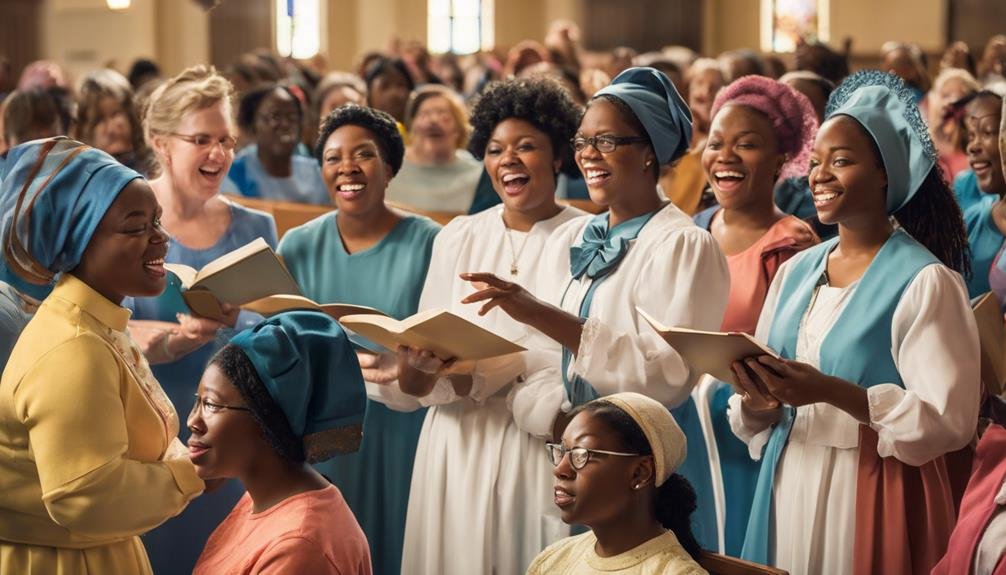
Many Baptist and Methodist churches differ markedly in their approach to the role of women in church leadership. In Baptist churches, women traditionally face restrictions from ordination, limiting their involvement in leadership roles like pastors or deacons. These restrictions can vary, as individual Baptist congregations might interpret these roles differently. However, the overarching tendency leans toward a more conservative perspective on women’s participation at the leadership level.
In contrast, the Methodist Church has embraced gender equality since 1956, permitting women to serve as pastors, bishops, and other leadership positions. This commitment to inclusivity reflects a broader theological emphasis on equality and the belief that leadership roles should be accessible to all, regardless of gender.
Here’s a quick comparison:
| Aspect | Baptist Churches | Methodist Churches |
|---|---|---|
| Ordination of Women | Generally restricted to non-ordained roles | Allowed since 1956 |
| Leadership Roles | Limited to specific roles | Open to all levels, including bishops |
| Gender Equality | Varies by congregation | Actively promoted across all church activities |
Thus, if you consider how each denomination views women’s roles, Methodists advocate for broader gender equality, while Baptists often exhibit more traditional views on church leadership.
Social and Political Views
When considering Baptists’ and Methodists’ social and political views, you’ll find distinct differences in their theological and historical backgrounds. Baptists emphasize individual advocacy, focusing on personal responsibility and moral values when addressing societal issues. They strongly support the separation of church and state, believing that individual conscience should guide social and political involvement.
Methodists, on the other hand, are recognized for their commitment to social justice. They often engage in community outreach programs and advocate for marginalized groups.
Here’s a closer look at their distinct approaches:
- Baptist Individual Advocacy: Baptists prioritize the role of individual conscience and personal responsibility in social and political matters. They believe each person should decide how to engage with these issues based on their moral compass.
- Methodist Community Outreach: Methodists actively participate in community outreach, working tirelessly to address social justice issues. Their efforts often focus on promoting equality and inclusivity through various programs.
- Separation of Church and State: Baptists advocate for a clear distinction between church and government, ensuring religious freedom and personal choice.
- Equality and Inclusivity: Methodists support policies that promote equality, demonstrating their commitment to inclusivity and advocacy for all.
Bible Interpretation

When considering Bible interpretation, you’ll notice a stark contrast between Baptists and Methodists. Baptists often emphasize a literal understanding of scripture, seeing it as the ultimate authority in faith and practice, while Methodists take a contextual approach, incorporating reason, tradition, and experience.
These differences can greatly shape each denomination’s theological beliefs and worship practices.
Literal vs. Contextual Understanding
Baptists and Methodists present distinct approaches that meaningfully shape their theology and practices in the Bible interpretation domain. Baptists often engage with the Bible using a literal interpretation, focusing on the direct and plain meaning of the text. This perspective emphasizes understanding scripture as it’s written without delving deeply into external influences or additional insights.
Conversely, Methodists adopt a more contextual understanding. They consider biblical passages’ historical context, literary styles, and cultural nuances. This approach is influenced by John Wesley’s teachings, which encourage a broader view of scripture.
Here’s how these differences manifest:
- Literal Interpretation: Baptists prioritize the explicit meaning of scripture, often resisting interpretations that deviate from the text’s direct message.
- Historical Context: Methodists incorporate the time and culture in which the Bible was written, seeking deeper insights.
- Cultural Context: Methodists analyze how social and cultural factors influence biblical narratives and teachings.
- Theological Themes: Methodists explore overarching themes and ideas within the Bible, allowing for a more nuanced view of its message.
These differing interpretations influence the theological perspectives and practices within each denomination, highlighting their unique approaches to faith.
Scriptural Authority Perspectives
Scriptural authority plays a pivotal role in shaping Baptists’ and Methodists’ beliefs and practices. When you explore their interpretation approaches, you’ll notice key differences.
Baptists tend to interpret the Bible with a literal and absolute perspective, emphasizing its authority in matters of faith and practice. They believe in the Bible’s verbal plenary inspiration, viewing it as God’s infallible and inerrant word. This approach often leads Baptists to prioritize scripture as the sole foundation for their beliefs, resulting in fewer authority conflicts within their doctrine.
On the other hand, Methodists embrace a more contextual understanding of the Bible. They combine scripture with reason, tradition, and experience, allowing these elements to inform their interpretation. While they acknowledge the Bible as the primary source of revelation, they also allow other sources to shape their faith. This approach can lead to authority conflicts as different interpretations and influences come into play, especially when balancing tradition with modern understanding.
These differences in Bible interpretation profoundly influence the theological beliefs and practices within each denomination. Understanding these perspectives helps you appreciate the diversity and depth of Christian thought between Baptists and Methodists.
Community Involvement
Community involvement is a cornerstone of both Baptist and Methodist traditions, with each denomination actively rolling up its sleeves to make a difference.
Baptists often concentrate on local partnerships, collaborating with community organizations, schools, and government agencies to tackle pressing social issues. This focus fosters unity and purpose, encouraging members to participate in outreach programs and social services directly benefiting their local communities.
In contrast, Methodists expand their reach through global missions, engaging in projects beyond local boundaries. These efforts might include mission trips that address international needs, emphasizing the Methodist commitment to making an impact worldwide. Methodists channel their energy into disaster relief efforts and charitable initiatives that transcend geographic borders, reflecting their inclusive and global mindset.
Here’s how both denominations actively participate in community involvement:
- Outreach Programs: Engaging in local and international outreach to support those in need.
- Social Services: Offering social services that address local community needs.
- Mission Trips: Organizing mission trips that focus on global outreach.
- Partnerships: Building partnerships with local entities to tackle social challenges.
Baptists and Methodists embody a spirit of service, enriching their communities and themselves.
Conclusion
In comparing Baptists and Methodists, you’ve explored their unique practices and beliefs, from baptism to church governance. Both denominations have distinct approaches to salvation, communion, and Bible interpretation, reflecting their rich histories. Despite these differences, they commit to community involvement and to their faith. Their varied views on the role of women and social issues highlight their diverse perspectives. Understanding these distinctions enables understanding their contributions to the Christian faith.
FAQs
What is the main difference between Baptists and Methodists?
The main difference between Baptists and Methodists lies in their beliefs about baptism, salvation, and church structure:
- Baptists: Baptists practice believer’s baptism, meaning only individuals who can profess their faith are baptized. They perform full immersion during baptism and emphasize salvation by faith alone (sola fide). Baptists tend to have congregational church governance, where individual churches are autonomous.
- Methodists: Methodists practice infant and believer baptism, often by sprinkling or pouring. They believe in salvation through faith and works and emphasize grace as a central element. Methodists have a more structured and hierarchical church governance, with bishops and conferences overseeing congregations.
Key Differences:
- Baptists emphasize the believer’s baptism and salvation by faith alone.
- Methodists practice both infant and believer’s baptism and emphasize grace and works.
How do Baptists and Methodists view baptism?
Baptism is a significant area of difference between Baptists and Methodists:
- Baptists: Belief in believer’s baptism, where only those old enough to confess their faith in Jesus Christ are baptized. Baptism is performed by full immersion, symbolizing the believer’s death to sin and resurrection in Christ.
- Methodists: Practice infant and believer baptism, acknowledging that God’s grace works even in those too young to profess faith. Baptism can be done by sprinkling, pouring, or immersion.
Baptism Views:
- Baptists: Believer’s baptism by immersion only.
- Methodists: Infant and believer’s baptism by sprinkling, pouring, or immersion.
How do Baptists and Methodists view salvation?
Both Baptists and Methodists believe in salvation through Jesus Christ, but their approaches differ:
- Baptists Believe in salvation by faith alone (sola fide), meaning that individuals are saved by their faith in Jesus Christ without needing additional works. Once a person is saved, they are considered eternally secure.
- Methodists: Methodists believe in salvation by grace through faith but also emphasize the importance of good works and holy living as evidence of that faith. They stress that salvation is a process and can be lost if one turns away from God, though God’s grace is always available.
Salvation Views:
- Baptists: Salvation by faith alone and eternal security.
- Methodists: Salvation by grace, emphasizing good works and the possibility of falling from grace.
How do worship practices differ between Baptists and Methodists?
Worship styles in Baptist and Methodist churches can vary, but there are some common distinctions:
- Baptists: Worship services in Baptist churches are often more informal and centered on preaching. Congregational singing and prayer are also central elements, but there is less emphasis on liturgical rituals.
- Methodists: Methodist worship is more liturgical and structured, often following a set order of worship that includes hymns, responsive readings, and the Lord’s Prayer. The Eucharist (Communion) is celebrated regularly but less frequently than in some other denominations.
Worship Differences:
- Baptists: Informal, preaching-focused services.
- Methodists: Structured liturgical worship with hymns and rituals.
How are Baptist and Methodist church structures different?
Church governance is another area where Baptists and Methodists differ significantly:
- Baptists Practice congregational governance, which means that each church operates independently, making its own decisions without oversight from a larger governing body. The local congregation elects pastors and makes decisions on church matters.
- Methodists Follow an episcopal structure, meaning bishops and conferences govern churches. Decisions and appointments, such as assigning pastors, are made at a higher level, giving the denomination a more hierarchical structure.
Church Structure:
- Baptists: Congregational governance with independent churches.
- Methodists: Episcopal structure with bishops and centralized authority
